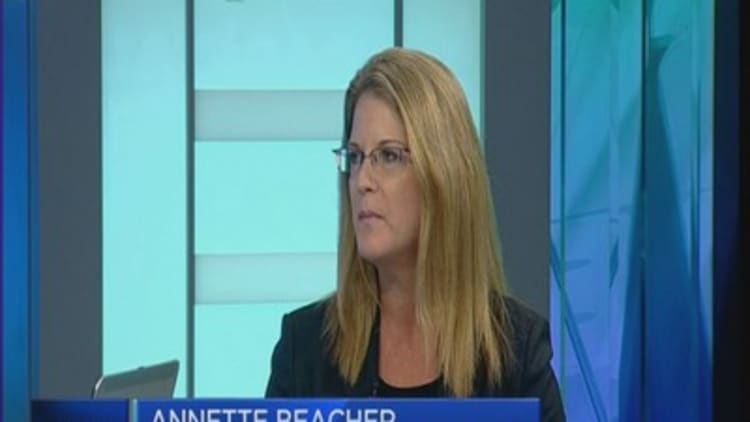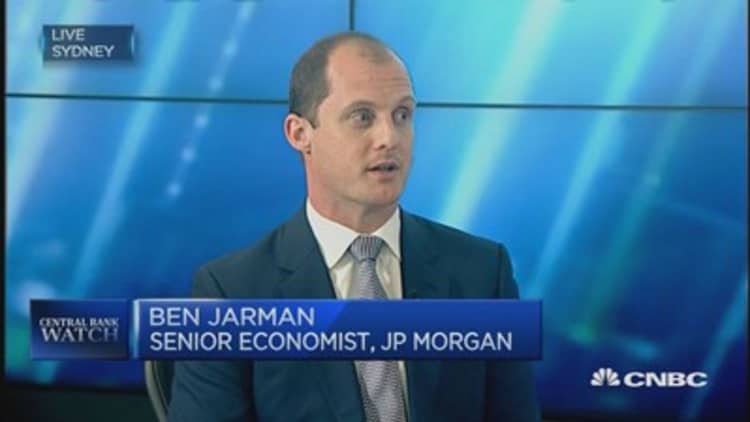Australia's central bank kept interest rates at a record low on Tuesday in a widely expected decision ahead of GDP data that is likely to show economic growth shifted a gear lower in the second quarter.
The Reserve Bank of Australia (RBA) left the cash rate at 2.0 percent, where it has been since May. It cemented its wait-and-see stance by repeating that it would assess upcoming economic data to judge the impact of past easings.
"In Australia, most of the available information suggests that moderate expansion in the economy continues," the central bank said in a short post-meeting statement.

The RBA gave no fresh guidance on the rates outlook, as it normally does after a 'no change' decision, leaving markets with little to act on. The Australian dollar barely reacted, holding just above 71 U.S. cents and not far from a 6-1/2 year trough of $0.7044 set recently.
The RBA appeared comfortable with the level of the Australian dollar, reiterating that it is "adjusting to significant declines in key commodity prices."
The RBA noted a recent spike in global stock market volatility triggered by "developments in China", but offered no insights.
"The main surprise is that despite all the volatility in financial markets over the last few weeks and the heightened worries over China, there is not more reference to that," said Shane Oliver, chief economist at AMP Capital Investors.

The rate decision came just hours after data from the Australian Bureau of Statistics (ABS) showed net exports will take a bigger bite out of second quarter gross domestic product (GDP) than initially expected.
But this is mostly offset by a surprisingly solid rise in government spending and investment. According to the ABS, net exports should detract 0.6 percentage points from GDP as export volumes retraced after the recent boom. The market consensus had been for a smaller 0.3 percent detraction.
"The slowdown in China and the fall-out in Asia should continue to weigh on export volumes," analysts at Citi wrote in a note to clients.
In contrast, government consumption rose 2.2 percent, driven by defence spending, while investment jumped 4.0 percent.
The strong public sector demand could have saved GDP from turning negative in the second quarter, a few analysts said. The GDP report is due on Wednesday.
The economy is expected to grow a pedestrian 0.4 percent on the quarter, taking the annual rate down to 2.2 percent from 2.3 percent - the slowest since third-quarter 2013. Such an outcome would come as no surprise to the RBA, which is forecasting GDP growth of between 2 and 3 percent over the year to June 2016.

